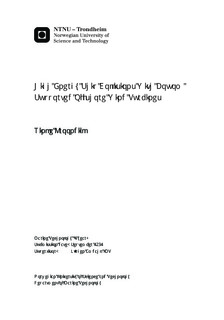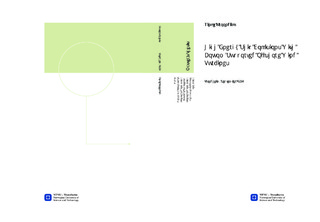| dc.contributor.advisor | Amdahl, Jørgen | nb_NO |
| dc.contributor.author | Kroondijk, Rinke | nb_NO |
| dc.date.accessioned | 2014-12-19T12:08:27Z | |
| dc.date.available | 2014-12-19T12:08:27Z | |
| dc.date.created | 2012-11-10 | nb_NO |
| dc.date.issued | 2012 | nb_NO |
| dc.identifier | 566907 | nb_NO |
| dc.identifier | ntnudaim:8439 | nb_NO |
| dc.identifier.uri | http://hdl.handle.net/11250/238324 | |
| dc.description.abstract | As the worlds demand for energy is increasing mostly due to the increase in population, and coal, oil and gas deposits are limited, it is desirable to gather energy from renewable energy sources. Wind energy is a form of renewable energy. Wind turbines have been common on land and near shores for some time, but now one wants to take advantage of the wind resources further away from the coast. As the length from the coast increases, so does the water depth making it necessary to use other foundations than the well-known monopile. In this thesis the Federal Maritime and Hydrographic Agency in Germany, also known as Bundesamt für Schifffarth und Hydrographie requires in the standard Design of Offshore Wind Turbines that an offshore wind turbine needs to be risk evaluated against a ship tanker of more than 500 MJ in collision energy in order to be classified as collision energy. This is to prevent environmental pollution in form of oil spill. Whether the offshore wind turbine models used in this thesis are collision friendly or not relies on different factors. When the given soil properties are used the analyses show in all cases except one that the offshore wind turbine models can be called collision friendly. The case were it could not be called collision friendly was a case with the small jacket at a water depth of 27 m getting hit by a loaded ship at a column of the jacket, but installing a horizontal brace on this jacket would make it also collision friendly. The effects of soil, water depth and a horizontal x-brace are looked further into in this thesis. If the soil had been stronger it is not certain that the outcome would be the same. When the jackets were fixed to the sea bed, several of the models could collapse in the dangerous direction over the ship. A horizontal brace was seen to have a positive effect when installed on the different jacket models. It seems also that it is more favorable to use jackets at deeper water. | nb_NO |
| dc.language | eng | nb_NO |
| dc.publisher | Institutt for marin teknikk | nb_NO |
| dc.subject | ntnudaim:8439 | no_NO |
| dc.subject | MIMART Marin teknikk (2 årig) | no_NO |
| dc.subject | Marin hydrodynamikk | no_NO |
| dc.title | High Energy Ship Collisions With Bottom Supported Offshore Wind Turbines | nb_NO |
| dc.type | Master thesis | nb_NO |
| dc.source.pagenumber | 61 | nb_NO |
| dc.contributor.department | Norges teknisk-naturvitenskapelige universitet, Fakultet for ingeniørvitenskap og teknologi, Institutt for marin teknikk | nb_NO |

